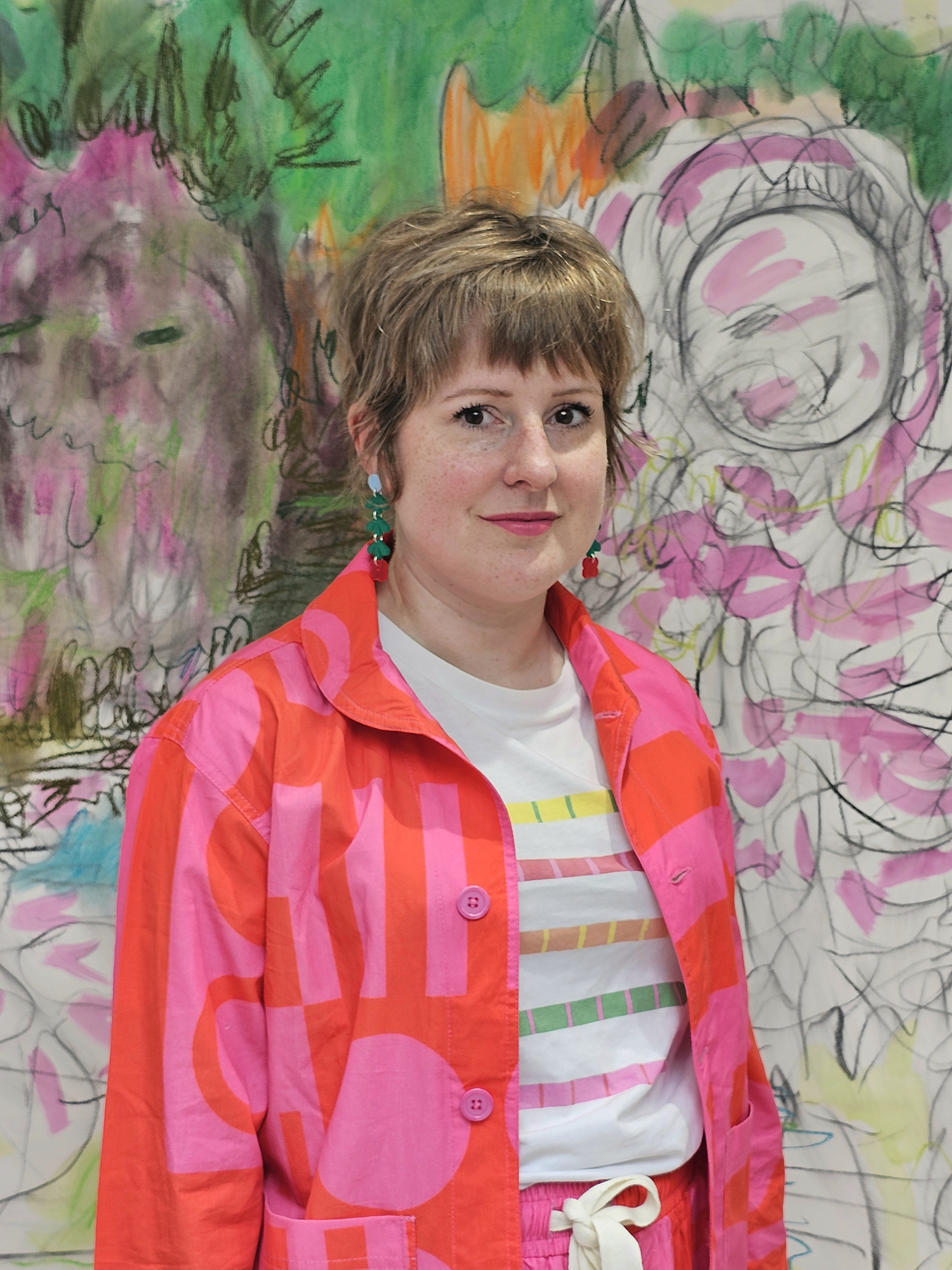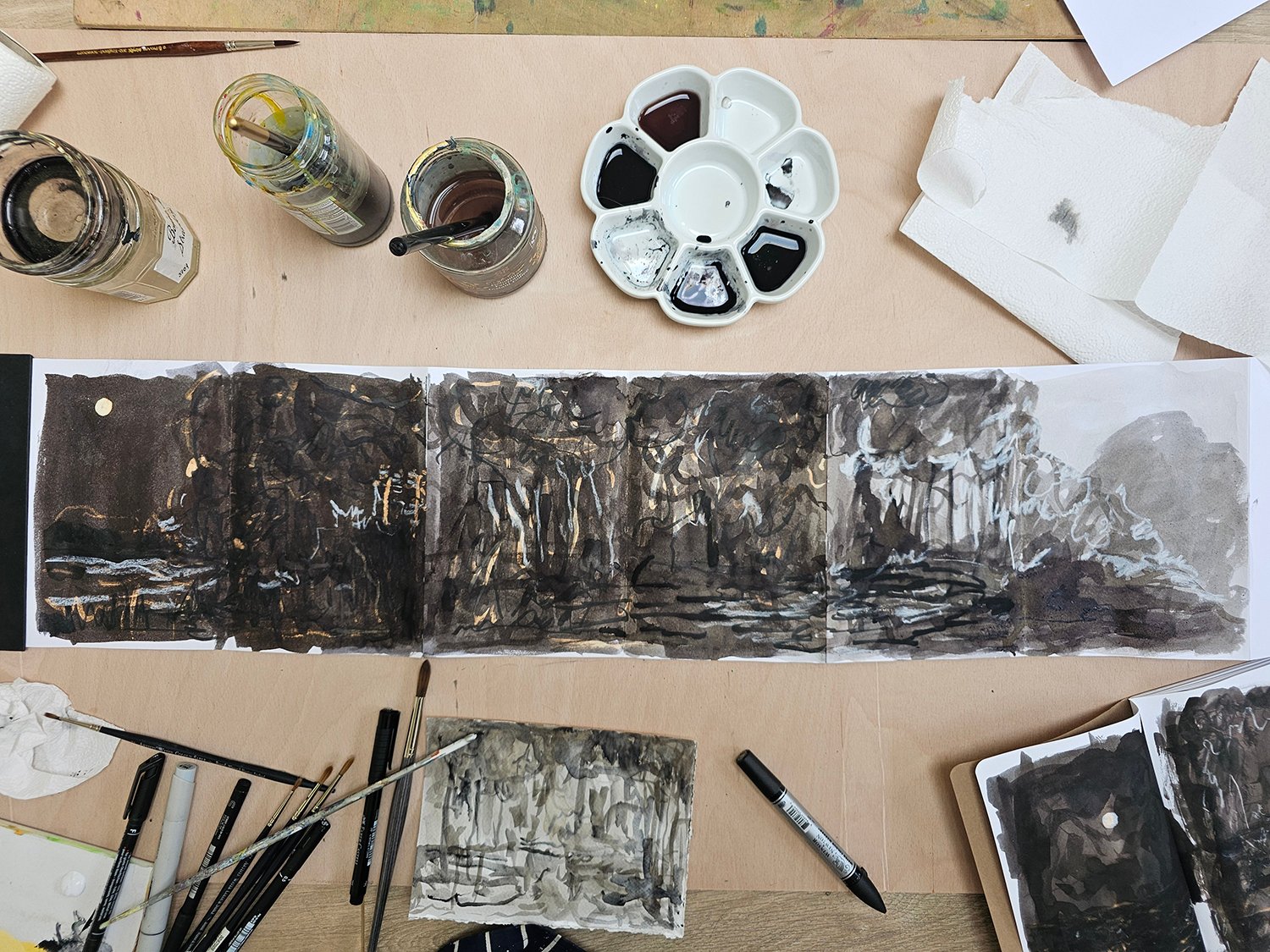
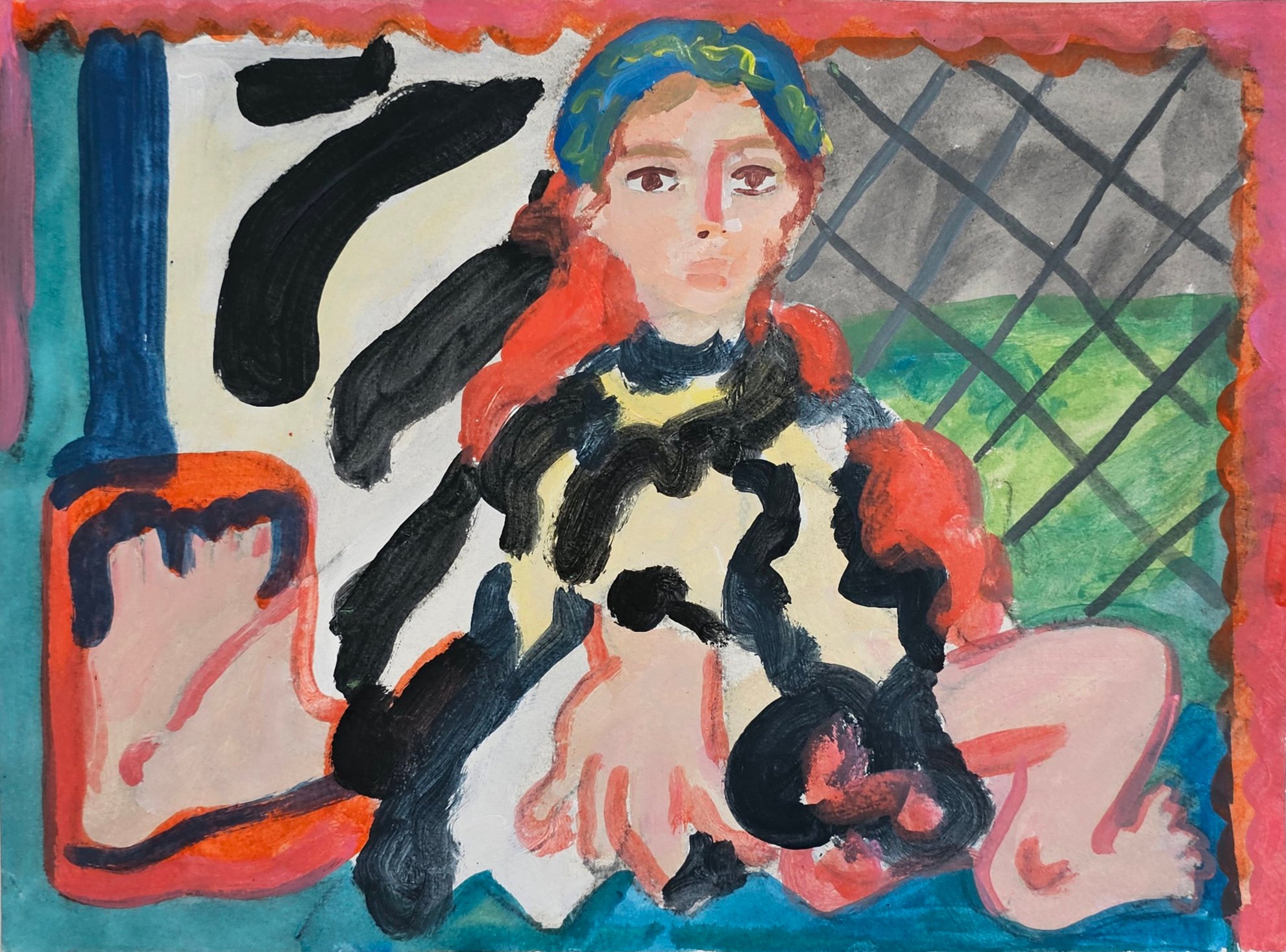
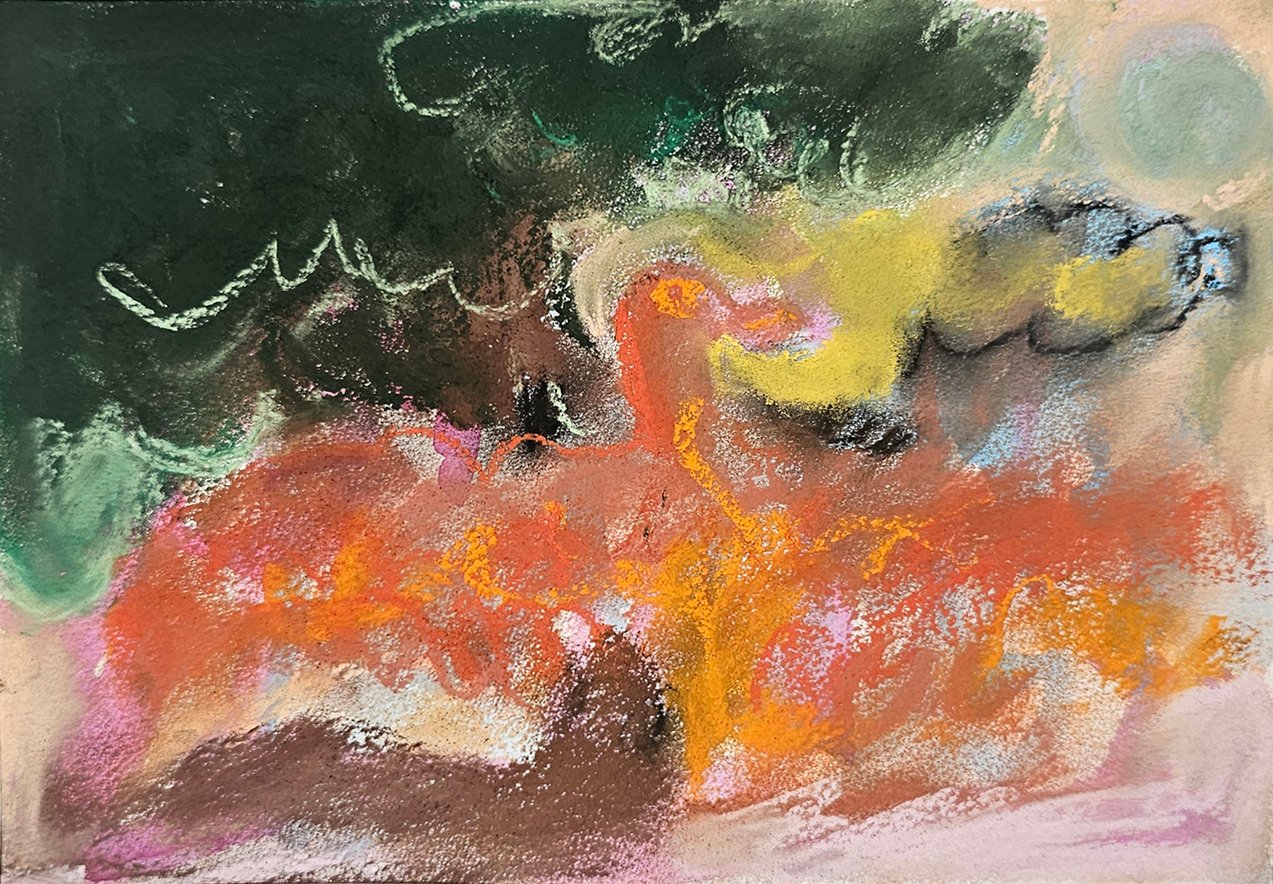
Where are you based?
I'm based in Nottingham, UK. I'm really fortunate as I have two studios. One at a brilliant artist-run organisation called Primary that’s situated in Lenton just on the edge of the city centre. I also have a small, purpose-built studio at home which is at the bottom of my garden.
I mostly use my home studio for the Online Drawing Development Year work as it’s easier to balance the course and home life – simply due to its close proximity to my house!
Before joining the Online Drawing Development Year, what were you doing?
I graduated with an MA in Painting from the Royal College of Art, London in 2007. Since then I've had predominantly a studio-based practice. I moved from London to the East Midlands in 2012 and I am currently a Senior Lecturer in Fine Art at Nottingham Trent University. I balance teaching with my practice and family (I have two children).
What appealed to you about the course?
I really wanted to be a student again and have an intense period of focus on my practice. I was attracted to the ethos of the School and the blended approach of working from observation and imagination.
I liked the idea of flexible online learning balanced alongside a busy life. I always wanted to study The Drawing Year in-person and this seemed like a great alternative option not living in London.
Can you tell us a little bit about your practice and relationship to making work? And how has this changed since joining the Online Drawing Development Year?
I am now more open to approaches to making and learning new processes with materials that I wouldn’t have used before. This includes mark-making and applying more painterly approaches through soft pastels. I enjoy seeing how the image emerges from the surface. This is different to how I approached before – designing the image.
Prior to starting the course my research largely focused on and around the object – which started from memory and/or imagination. I have always had an underlying interest in architecture and how I interact with a physical structure situated in a landscape, both urban and rural. I am interested in how this encounter changes at different stages in my life (as a child/teenager/young adult and parent).
My work has now become more expansive, and imaginative, so much so that invented worlds are beginning to emerge. The starting point is from the everyday, suburbia, boredom, wild space, creatures and play.
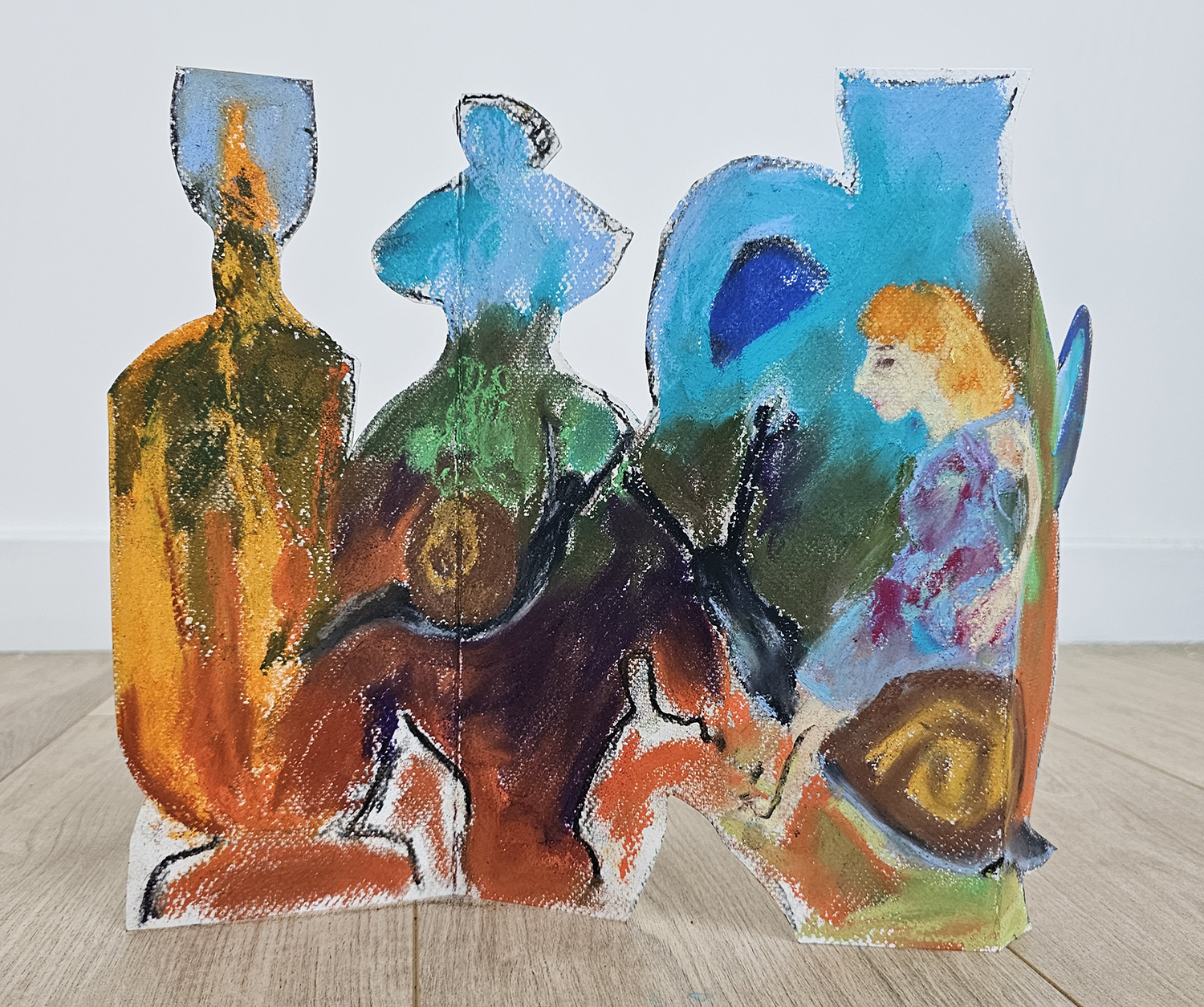
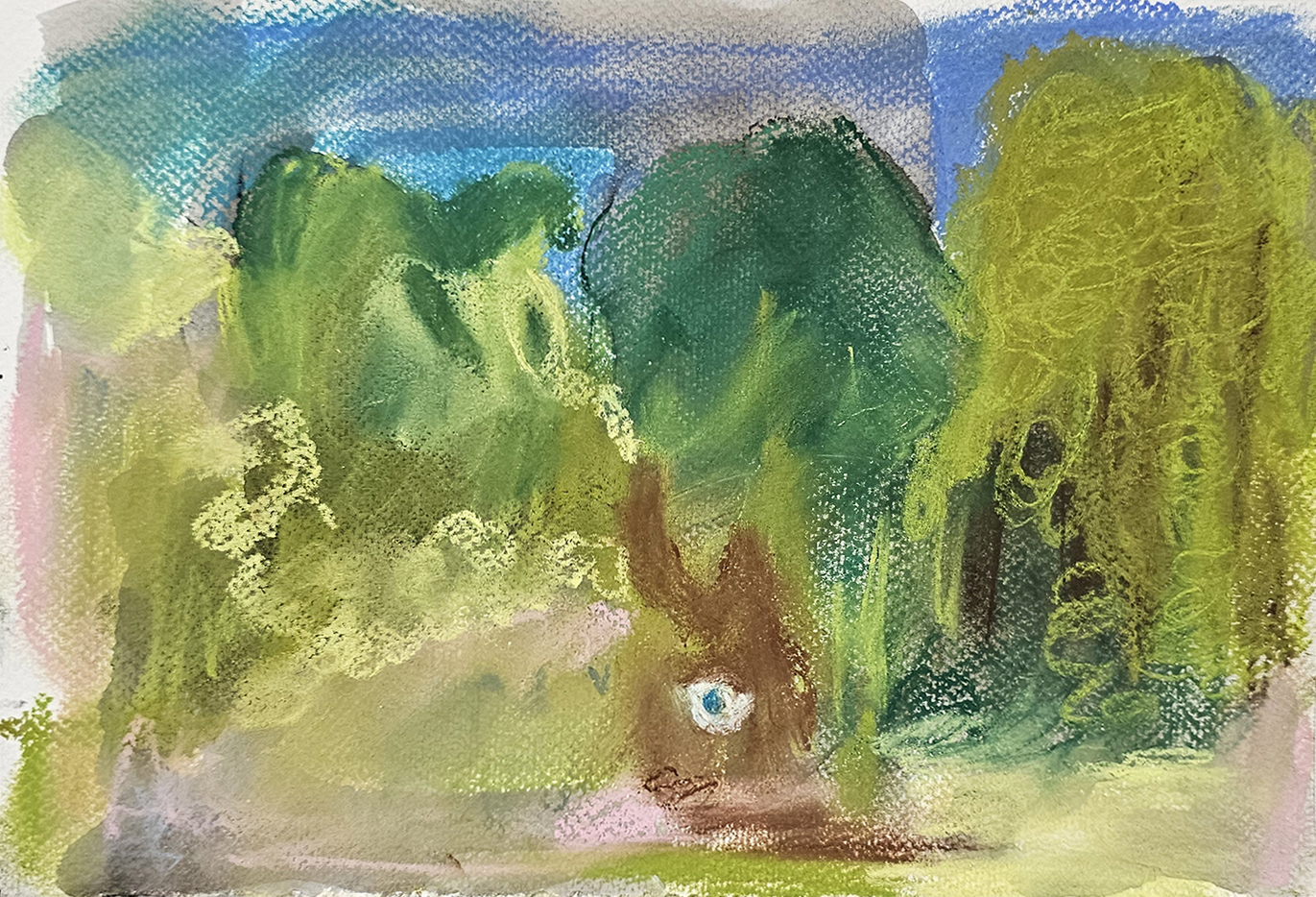
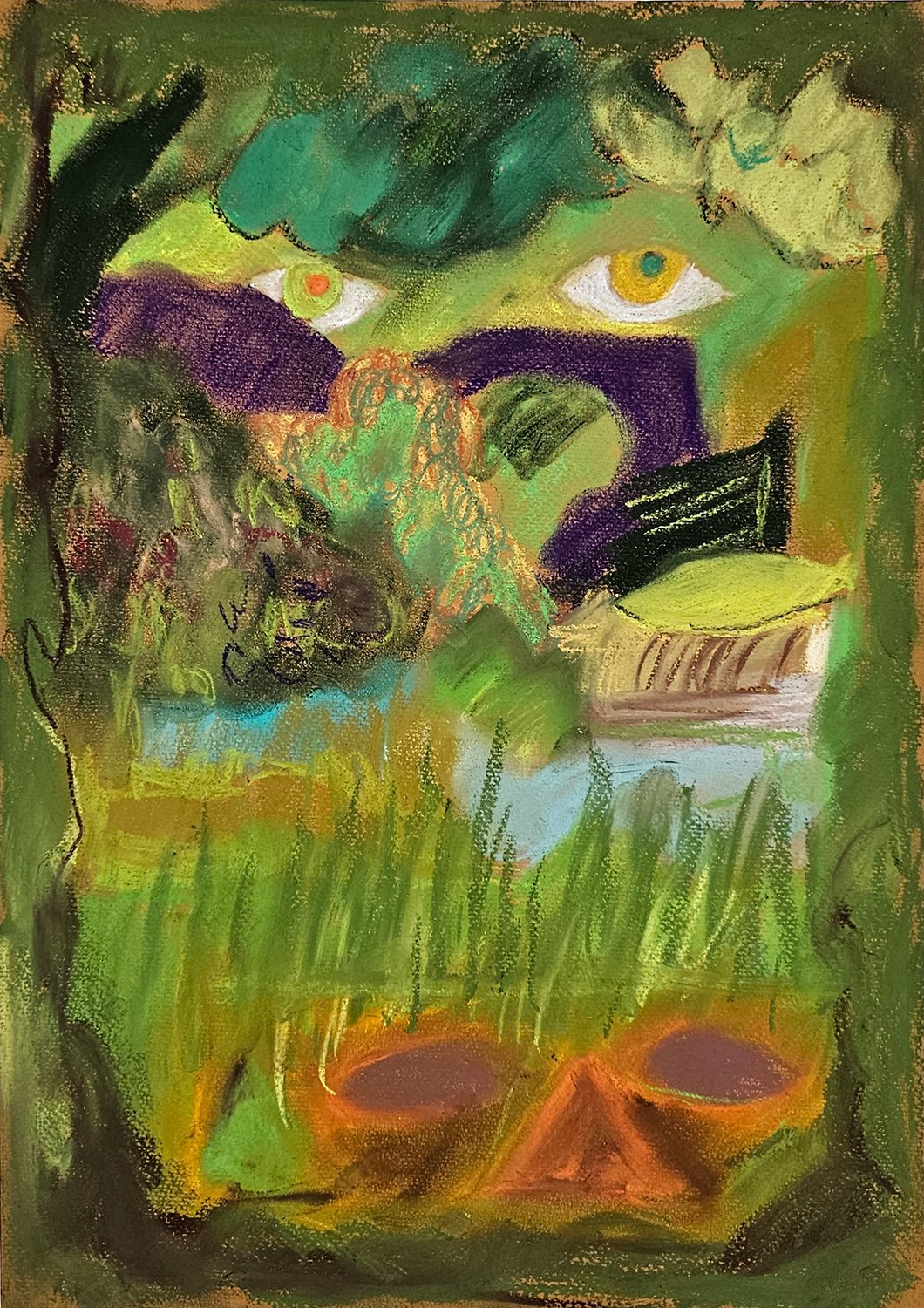
What courses have you most enjoyed or learnt most from?
I have been surprised that I’ve been enjoying the more structured courses, ones with a blend of observation and imagination. I learnt a lot in the Spring Term from the course Drawing: Observation and Imagination with Katy Papineau and Leon Pozniakow. This class introduced me to soft pastels and I fell in love with them! I also learnt to embrace the painterly qualities of charcoal, too.
This term I valued Sara Lee Roberts’ generosity and guidance in the course Abstraction Qualities in Landscape, Gardens, and Natural Forms. During the course I learnt other ways to experience colour through perception and to physically respond to the landscape – articulating through mark making, line and shape.
What have the benefits of learning online been for you?
The flexibility of online learning and being able to work from home. I also love meeting and working with people from around the world, which is much more likely to happen online than in person.
Is there anything that surprised you about the course?
I have started to really see again – physically, but also by sensationally experiencing what is happening around me. And I am surprised that this adjustment has happened online!
Are there any particular ways that the School has been able to support you over your time on the Online Drawing Development Year?
I benefited from guidance shared as part of the general critiques at the end of each class. Tutors and peers shared feedback. It has helped me to be more objective and thoughtful when reflecting on my work.
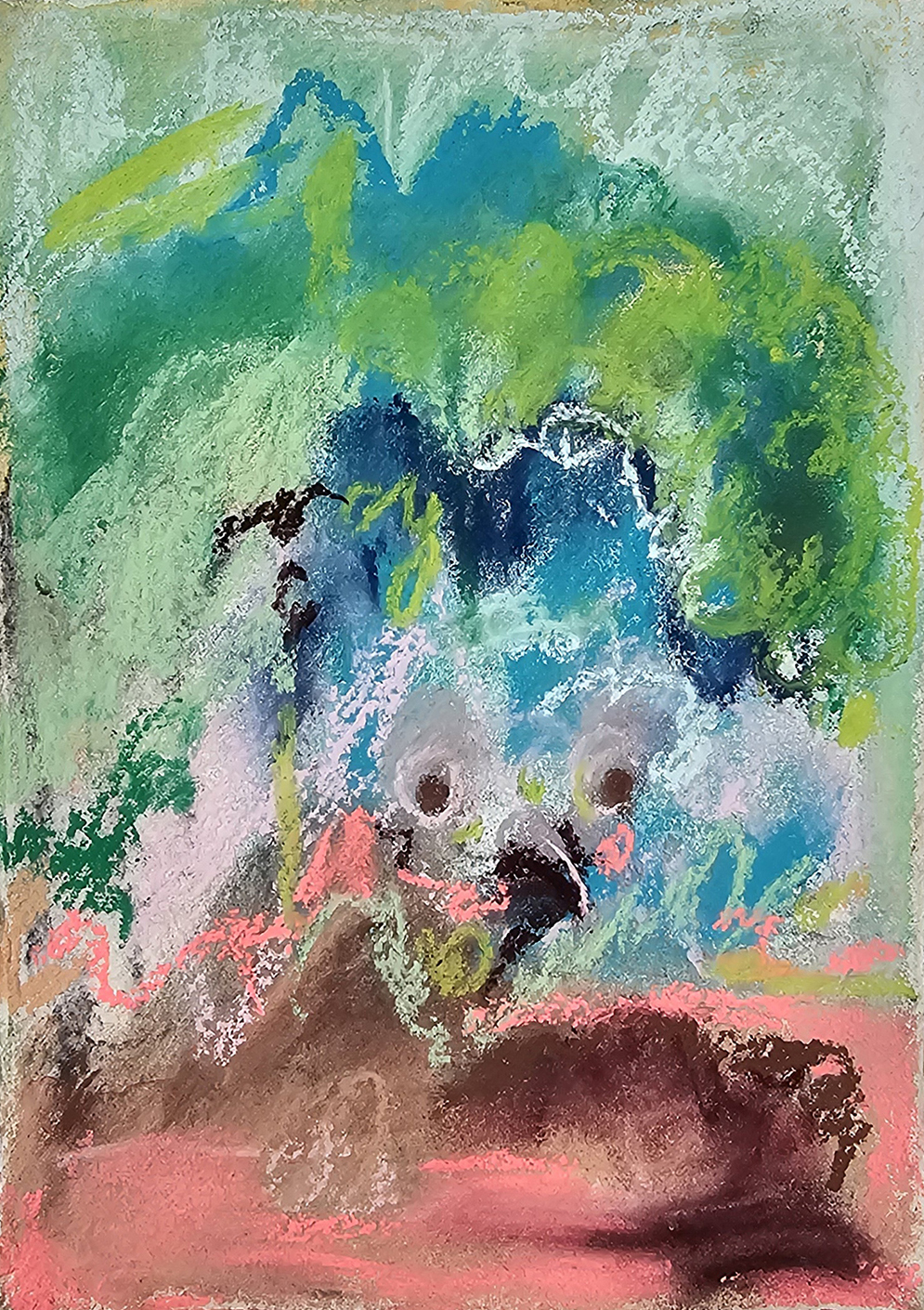
What advice would you give to someone who is thinking about applying to the Online Drawing Development Year?
Go for it! Remember – the course is intense but you can adjust the schedule around your life.
Try to commit to the programme as much as you can. I’d say that I have literally thrown myself in and it has enriched my practice in so many ways.
Do you have any plans for after you have completed the course that you would like to share?
I have artworks included in group exhibitions that are happening in the autumn. Flat – a four-person exhibition at Primary in Nottingham curated by Jade Foster. Flat Volume curated by artist and academic Sarah Longworth-West which is happening at APT Gallery in Deptford, London and I’ll be showing a painting alongside a great list of artists.
Missed the Open Day?
Learn more about the programme
Sign up for updates
Be the first to hear about the Online Drawing Development Year open days, application support and deadlines.
